Making you go faster: The tech inside your running shoes explained
ManVMiles.com runmeister general Kieran Alger looks at what each of five big brands has to offer

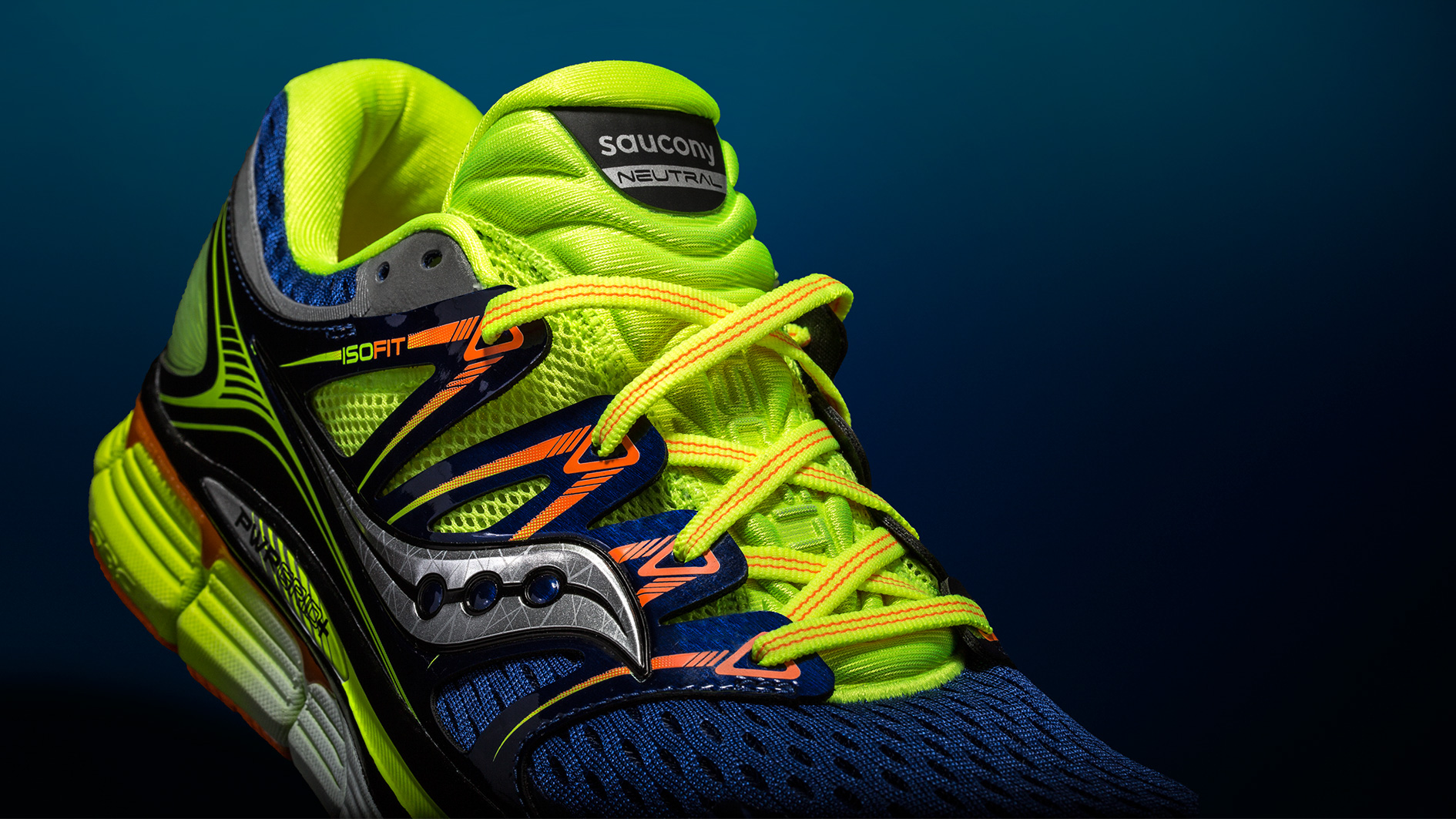
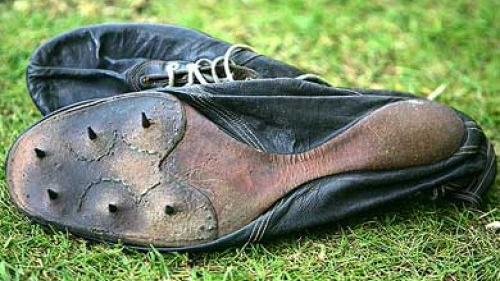
Introduction
Fifty years ago when Roger Bannister became the first person ever to run a sub-4-minute mile he did it in a pair of track spikes that looked like someone had hammered nails through a pair of your old brogues.
But even back then Bannister knew that lacing up the right shoes could make a difference. In a 2009 interview with the Daily Telegraph, he commented: “I found a new shoe, used by the Kenyans based on something very cheap for them, the section of a car tyre. I thought, 'what are these?' and found they lead to a rolling action when you're running, which reduces the impact.”
Whatever the shoes were made of, or what they claimed to do,they worked, helping Bannister power home in 3:59:40.
In the five decades since, technology has revolutionised what we put on our feet to pound the pavements. Running shoe tech has become big business with all the big running brands investing in cutting edge sports science labs to monitor every detail of our biomechanics, searching for new ways to give everyone from Mo Farrah to the London Marathons plucky amateurs,that all-important edge.
But while technology will definitely add a few quid to the price of your knew running shoes, can it really make you run faster? The big brands certainly want us to believe it can. But behind the fancy labels what does all this stuff actually do? From ;Adidas' fancy new foam to Nike's woven one-piece Flyknit uppers, we take you behind the trainer tech from four of the biggest, most innovative brands.
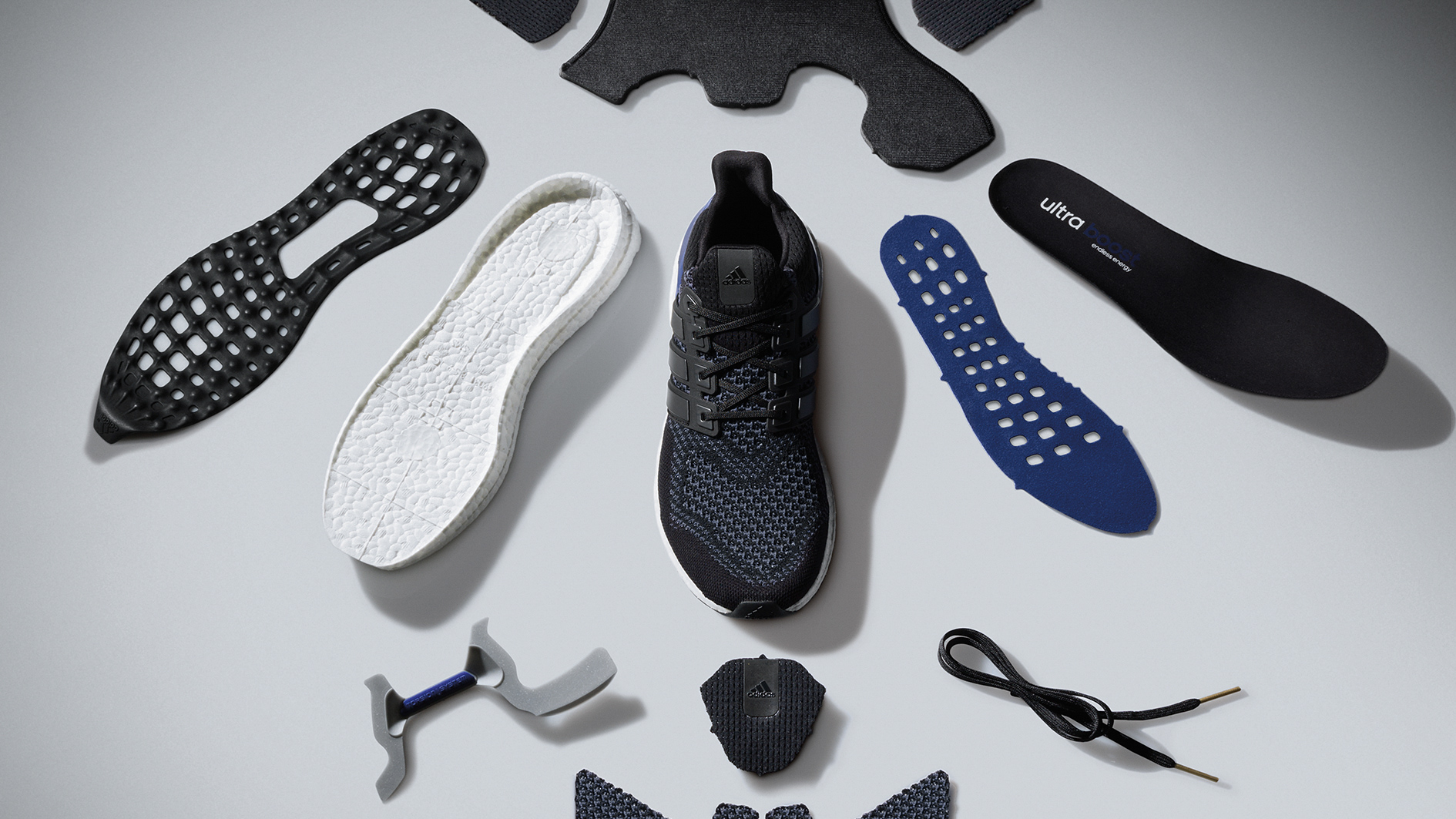
German Engineering: Adidas
Boost Foam
In 2012 Adidas decided to ditch the traditional EVA (that's Ethylene-vinyl acetate for anyone who cares) sole you still find in many running shoes and bring us the all new Boost foam. Over time, under the repeated impact of running, classic EVA compresses until its cushioning effect has been reduced to the point you need get new ones. Not so with Adidas' Boosttechnology.
Boost foam is made from thousands of little bubbles made from thermoplastic polyurethane, or TPU. A material more commonly found in car instrument panels, TPU is known for being strong and elastic. Drop a golf ball onto a square of it from waist height and it'll bounce right back, up above where it started. It's also able to withstand temperatures ranging from 40 degrees celsius down to minus 20 and is more resilient to the effects of impact, meaning it doesn't degrade nearly as fast as that good old EVA we used to love.
What it means for your running
The basic idea is that when your Boost-clad feet pound the pavements, the TPU foam converts all the energy you'd normally lose in sound, heat and vibration, back into power for your stride, giving you a welcome boost with every foot strike.
New Adidas PrimeKnit Upper
First outed ahead of the London Olympics, Adidas PrimeKnit upper is what the Three Stripers call 'seamless engineering technology'. Very similar to Nike's Flyknit, rather than using lots of little parts, all stitched together,PrimeKnit digitally knits the entire upper in one continuous piece using fused yarn.
What it means for your running
For a start, no seams means a lighter shoe, great if you're looking for that minimalist feel.Then there's the added flexibly that comes with the weave. Adidas' lab tests revealed that your feet can expand up to as much as 10mm when you run.The PrimeKnit weave offers support where and when it's needed rather than relying on fixed point,structured reinforcements. This means the uppers actually adapt as you run for less friction and a more snug, comfortable fit. Although the close-fitting hug feeling you get might not be everyone's cup of Gatorade.
Stretch Web Outsole
While making the 2015 Ultra Boost, Adidas also put the outsole, that bit on the very bottom of your running shoe,through their tech labs.The result is the new Stretch Web Outsole, a perforated elastic structure, made from Contintental rubber and designed to enhance the energy return effects of the Boost foam midsole, stretching and flexing in response to your unique foot strike.
Developed using heat and pressure sensing technology, the grips arranged across the bottom of the foot correspond with the key pressure points as the foot moves through a stride, ensuring the most used areas are also the hardest wearing.
What it means for your running
Having an outsole that works with the midsole, adapting to your unique foot strike,& should make for a far more comfortable run.The grip pattern also provides traction without overdoing it.
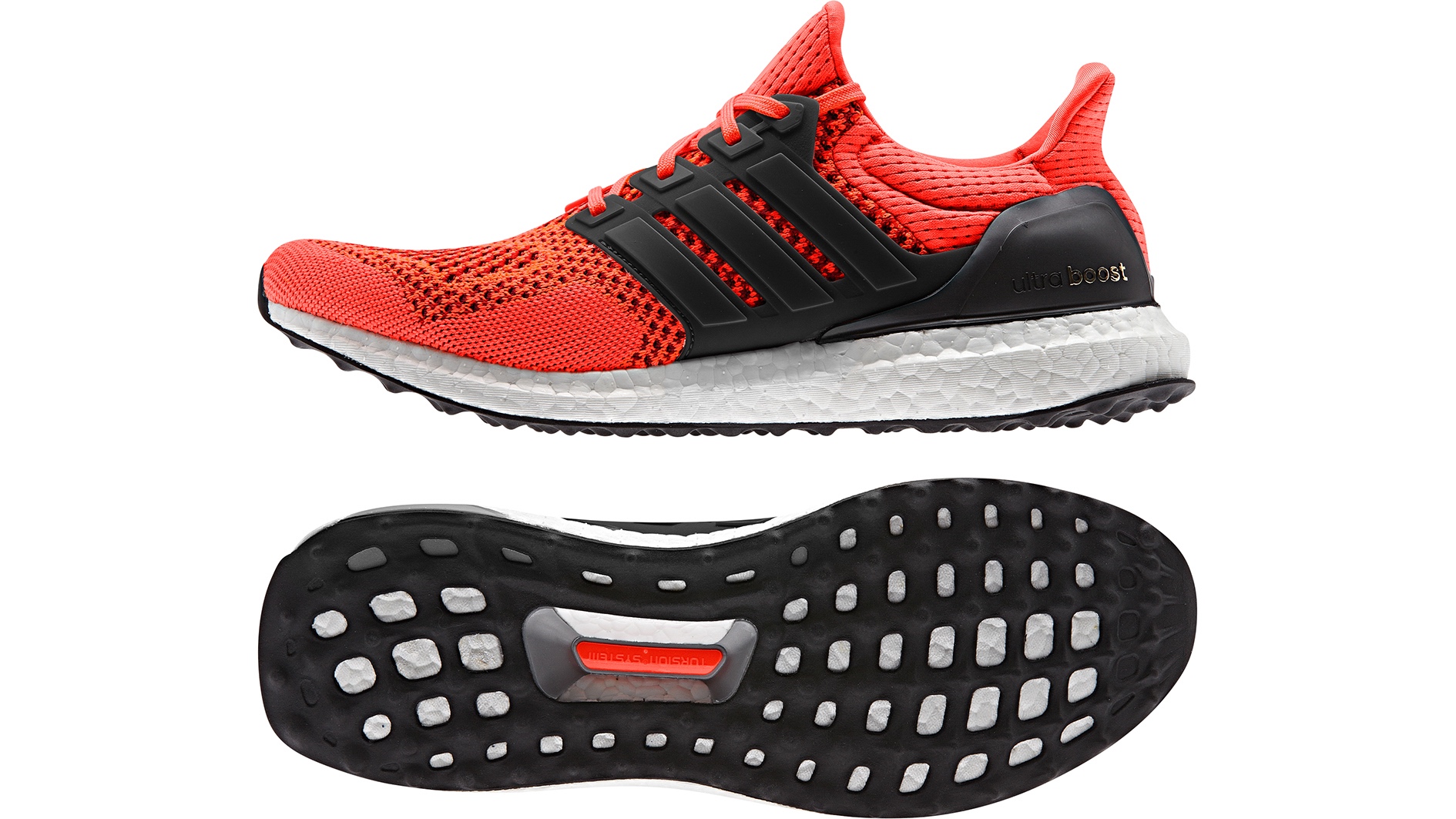
The Techiest Adidas Shoe
Turbo Boosters:The Adidas Ultra Boost
To make the Ultra Boost, Adidas deployed ARAMIS, a system used by NASA, BMW and Boeing to measure how objects behave under different pressures. The end product is a shoe&nbthat crams in a lot of innovation. With the flexibility of the PrimeKnit uppers, 20 per cent more Boost foam bounce than any of its predecessors, a new heel construction that cradles your heel without restricting that all-important Achilles tendon and the stability-giving Adidas Torsion bar. With all of that on board it even led Germans to claim it& as the 'greatest running shoe ever made'.
£130 | Adidas
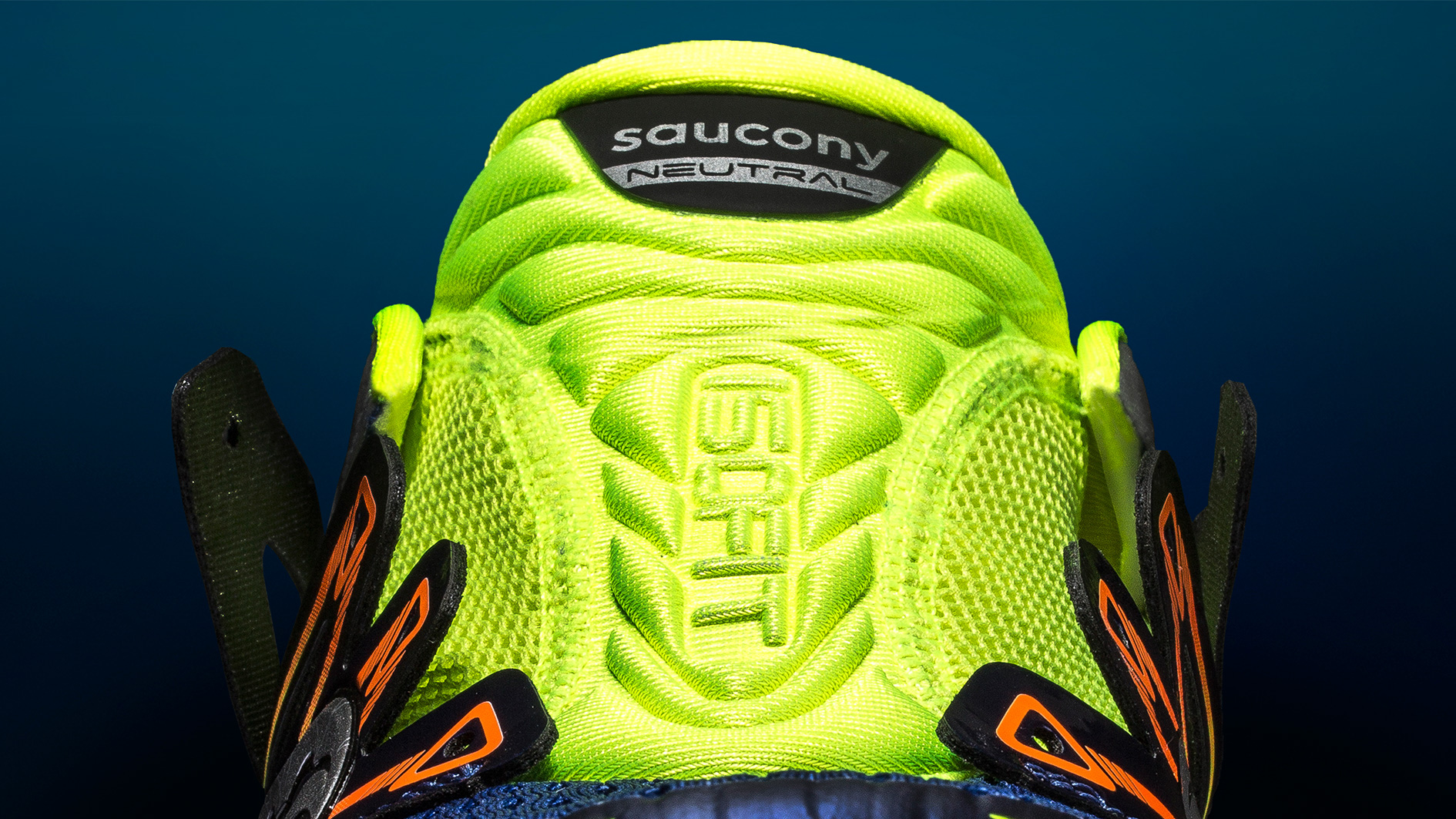
Saucs Appeal: Saucony
ISOFIT
An ultra-soft, inner fit-sleeve made from stretchable mesh, ISOFIT morphs to the foot for a sock-like feel. It also boasts afloating support cage that cradlesyourmid-foot and adapts to the foot's size, shape and movement, respondingto the way your foot moves during your run.
What it means for your run
Cushioning often comes at a cost with heavier uppers counter balancing the weight that's in the sole. That can make for a chunkier run. ISOFIT overcomes that somewhat by being light and strong. If you prefer a more cushioned shoe then you can have that without carrying too much weight on your feet.
PWRGRID+
What Saucony hails as the 'most cushioned running experience the brand has ever created' the new one-piece PWRGRID+ platform is engineered from a Powerfoam material, integrated with Saucony's GRID™ technology. This works a bit like a tennis racquet for a runner's foot.Woven Hytrel filaments in a grid configuration centre the foot on impact,creating a system that absorbs impact and distributes pressure better.An additional 3mm on in the heel helps add a 20 per cent cushioning boost over the standard PowerGrid construction we've seen in other Saucony shoes.
What it means for your running
You get more durability and protection for you legs and your shoes.

Saucony's Techiest Shoe
Tri-Harder:Triumph ISO
On top of the two innovations above, the new Triumph ISO series also feature aRundry lining that works just like the brand's apparel to pull sweat away from your feet,helping to reduce blister potential. Meanwhile a lightweight support frame wraps around your heel to keep it locked in place, preventing further friction-causing slippage for a more comfortable run over longer distances.
£125.00 | Saucony
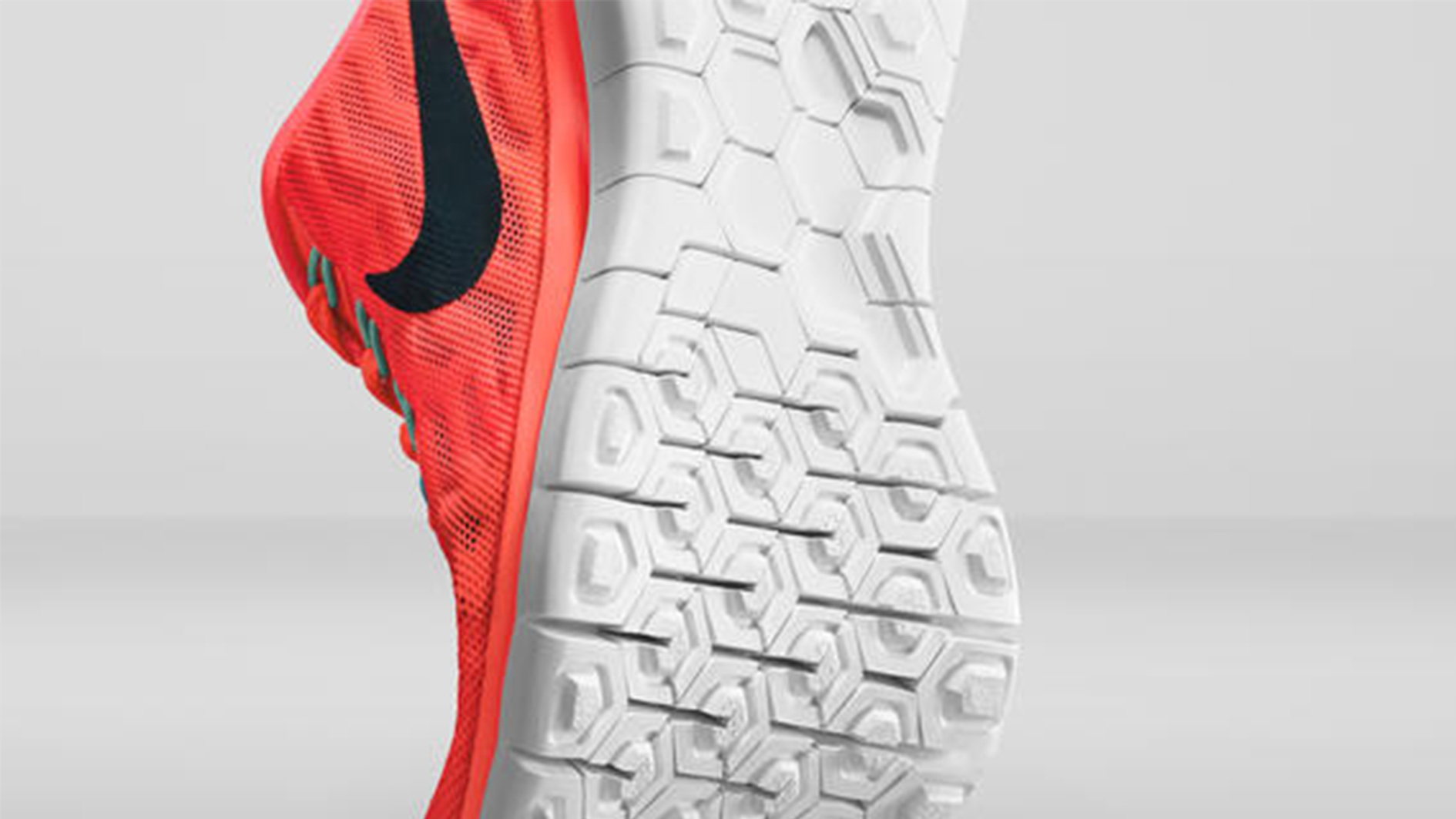
Free Flying Nike
Nike Flyknit
Four years in the making,Nike's micro-engineered Flyknit uppers are made using a micro-level engineering process where computer-controlled 'knitting' technology weaves strands of polyester yarn into one virtually seamless upper. This technique makes the whole shoe lighter, more flexible and more breathable without sacrificing stability.
Support and structure are knitted right into the Nike Flyknit upper without the need for friction-causing seams. The result are shoes that offer a sock-like snug fit, not to mention a lovely looking design.
What it means for your running
Just like the Adidas' knitted uppers, Flyknit tech makes for a lighter, more minimal fit that feels more natural, particularly when this tech is paired with the Free soles in shoes like the Nike Free Hyperfeel that literally feel like you're running in your socks, albeit with added protection.
Lunarlon Mid-Sole
Invented by Nike's Oregon technologists, Lunarlon was inspired by the way astronauts bounce on the moon.A giant leap in mid-sole materials first seen back in 2008, Lunarlon is thirty percent lighter than standard Phylon foam but that's not it's only benefit. Researchers at Nike's labs also used pressure plate tests to discover that this news sole was better at distributing impact pressure from running more evenly across the foot. When it's encased in a thinner layer of Phylon or Phylite foam it also retains stability, meaning lighter running shoes that still offer support.
What it means for your running
Lunarlon's larger distribution area for pressure means you are hammering the same spot on your feet the whole time. Although that doesn't necessarily mean less impact into your legs it should mean your feet have an easier time of it on longer runs.
Free Sole
Ask Nike's designers and they'll tell you the best bit of running tech we have is our feet. Free technology is designed around that idea, create to enhance the natural capabilities we already own. Designed to work with the natural motion of the foot, the Free range offers varying levels of cushioning from the more minimal 3.0 to the more protected 5.0.
The outsoles of Nike Free shoes feature siping (deep slices) and reverse flex grooves that encourage flexion and extension in both directions. Pick them up and you can bend and twist the shoes in a way you can't with standard running shoes.
What it means foryour running
With less cushioning and a more natural ride, your toes will flex and grip more. This engages a natural chain that exercises muscles normally neglected in your more heavily clad running shoes.
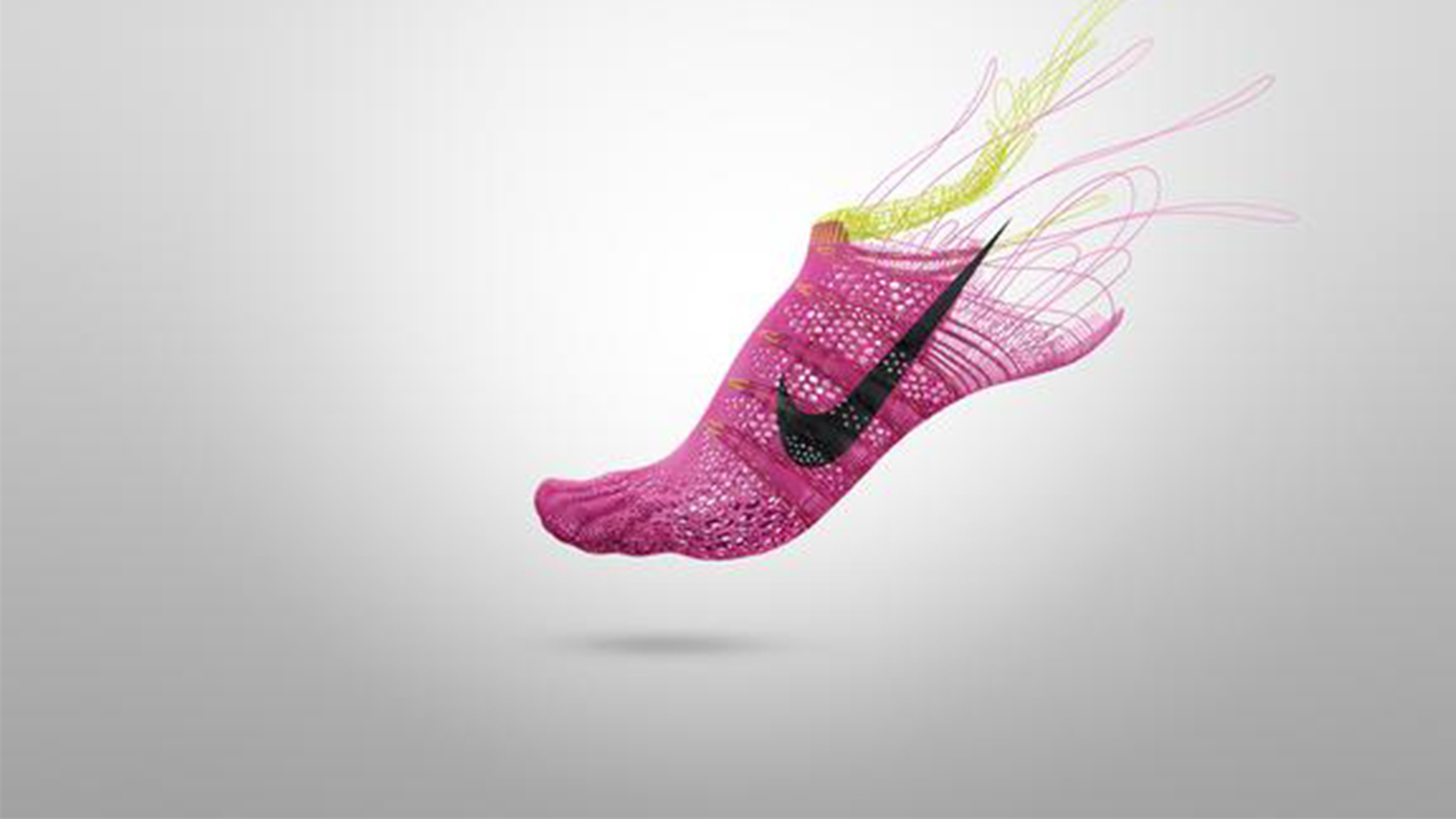
Nike's Techiest Shoe
Flying Machines:Nike Flyknit Lunar 3
While the Nike Free Hyperfeel look like the techiest shoes you can get your feet on, it's the Flyknit Lunar 3s that actually pack the most innovation into one shoe. These third-gen shoes combine a one-piece Flyknit upper with the lightweight Lunarlon sole,weighing in at just 218g(7.7oz). Meanwhile Flywire cables integrated into the Flyknit uppers offer added support, creating a cradle for the the foot and a personalised, secure fit.
£140 | Nike
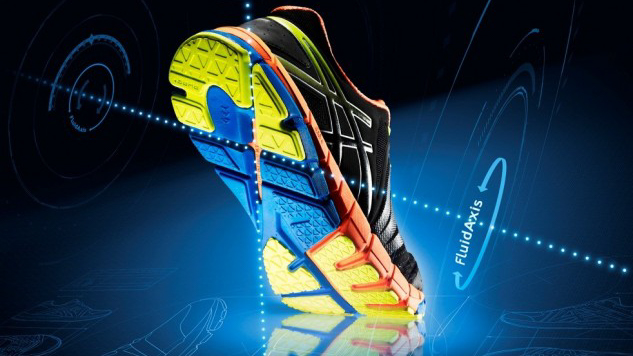
The A-Team: Asics
AmpliFoam
Asics new midsole technology offers soft cushioning at a lower density with materials that can't be broken down easily.It's designed to deliver flexibility, comfort and adaptability, encouraging your muscles to work harder by deforming quickly under pressure and returning to shape quickly.
What it means for your running
The softer cushioning means more comfortable miles for fans of a softer foot strike.
FluidAxis
This innovative outsole from Asics features anatomically correct deep flex grooves that are aligned to the joints of the foot.Breaking with traditional shoe design that tends to work on the basis of up and down motion, the FluidAxis system recognises the ankle joint is actually a rotating joint and enables the shoe to recognize, adapt, and respond to the exact load and positional change from first impact to toe-off.
What it means for your running
Getting more from every foot strike is the runners' Holy Grail. By working with your own unique running technique, FluidAxis aims to give your more forward motion form each step while minimising the impact and stress on your feet and and ankle joints.

Asics' Techiest Shoe
Well Gel:ASICS Gel Kinsei 5
Inaddition to the familiar forefoot and rear foot gel pockets, the latest generation of the ASICS Gel Kinsei range also boast the latest tech-laden upper with FluidFit two-direction stretch mesh for added comfort.There's also a full length guidance line and a propulsion trusstic, that mimics the action of connective tissue in the foot by creating tension as foot enters propulsion stage. Working together they help your foot fire you forward more efficiently, hopefully improving your gait and saving you energy.
£165 | Asics
Get all the latest news, reviews, deals and buying guides on gorgeous tech, home and active products from the T3 experts

Kieran is a freelance writer and editor working in the space where health, fitness, sports and technology collide. He covers everything from virtual reality and smart scales to the latest wearable health trackers. Kieran is also a borderline-obsessed runner and is passionate about using the latest technology to hack his health in search of marginal gains.